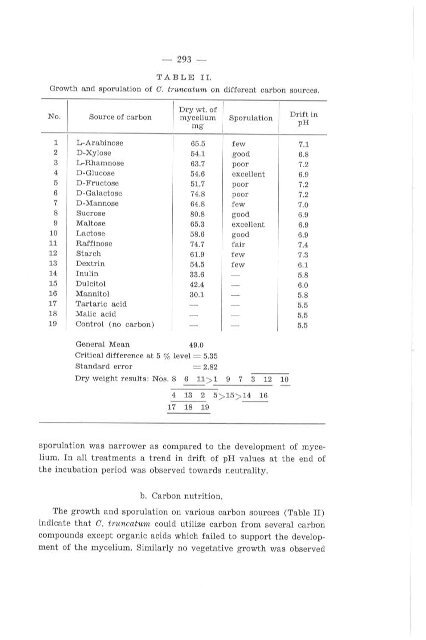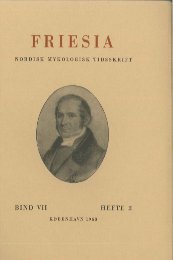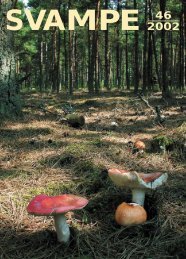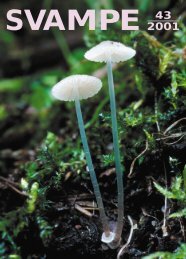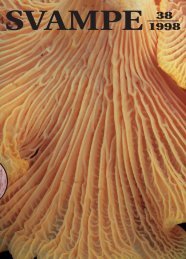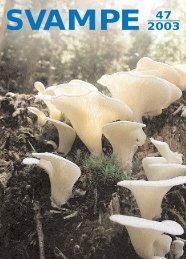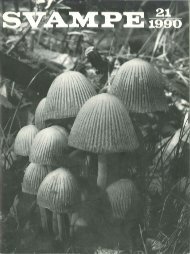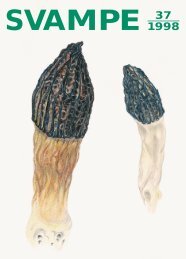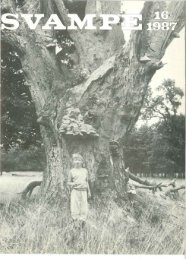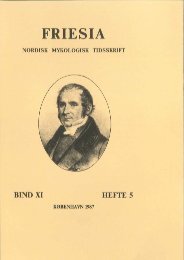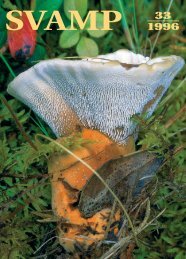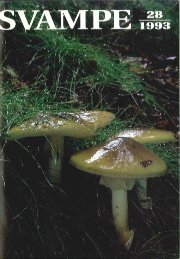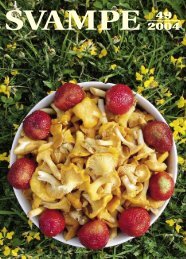Friesia X, 4-5
Friesia X, 4-5
Friesia X, 4-5
You also want an ePaper? Increase the reach of your titles
YUMPU automatically turns print PDFs into web optimized ePapers that Google loves.
- 293 -<br />
TABLE II.<br />
Growth and sporulation of a. truncatum on different carbon sources.<br />
No. Source of carbon<br />
Dry wt.of<br />
mycelium<br />
mg<br />
Sporulation<br />
Drift in<br />
pH<br />
1 L-A rabino se 65.5 fe w 7.1<br />
2 D- Xylose 54.1 g ood 6.8<br />
3 L-Rhamnose 63.7 poor 7.2<br />
4 D-Glucos e 54.6 excellent 6.9<br />
5 D-Fructose 51.7 poor 7.2<br />
6 D-Galactose 74.8 poo r 7.2<br />
7 D-Mannose 64.8 few 7.0<br />
8 Sucrose 80.8 good 6.9<br />
9 Maltose 65.3 excellent 6.9<br />
10 Laetose 58.6 good 6.9<br />
11 Raffinose 74.7 fair 7.4<br />
12 Starch 61.9 few 7.3<br />
13 Dextrin 54.5 few 6.1<br />
14 Inulin 33.6 - 5.8<br />
15 Dulcitol 42.4 - 6.0<br />
16 Mannitol 30.1 - 5.8<br />
17 Tartaric acid - - 5.5<br />
18 Malie acid - - 5.5<br />
19 Control (no carbon) - - 5.5<br />
General Mean 49.0<br />
Critical difference at 5 % level = 5.35<br />
Standard error = 2.82<br />
Dry weight results: Nos. 8 6 11 >1 9 7 3 12 10<br />
4 13 2 5 >15>14 16<br />
17 18 19<br />
sporulation was narrower as compared to the development of mycelium.<br />
In all treatments a trend in drift of pH values at the end of<br />
the incubation period was observed towards neutrality.<br />
b. Carbon nutrition.<br />
The growth and sporulation on various carbon sources (Table II)<br />
indicate that C. truncatum could utilize carbon from several carbon<br />
compounds except organic acids which failed to support the development<br />
of the mycelium. Similarly no vegetative growth was observed


